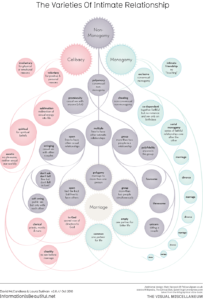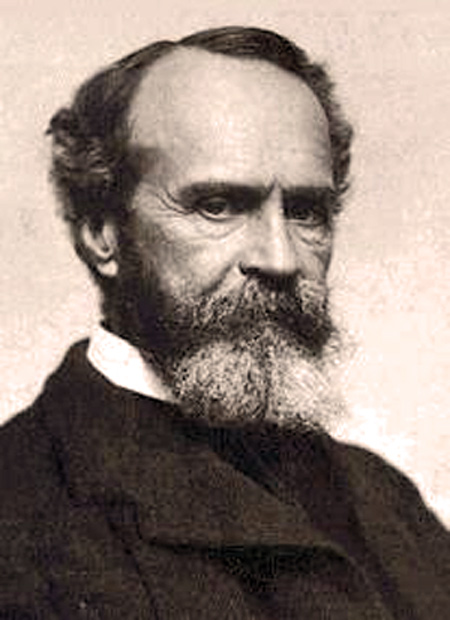Hugh Miller
When your father dies, say the Irish,
you lose your umbrella against bad weather.
May his sun be your light, say the Armenians.
When your father dies, say the Welsh,
you sink a foot deeper into the earth.
May you inherit his light, say the Armenians.
When your father dies, say the Canadians,
you run out of excuses.
May you inherit his sun, say the Armenians.
When your father dies, say the French,
you become your own father.
May you stand up in his light, say the Armenians.
When your father dies, say the Indians,
he comes back as the thunder.
May you inherit his light, say the Armenians.
When your father dies, say the Russians,
he takes your childhood with him.
May you inherit his light, say the Armenians.
When your father dies, say the English,
you join his club you vowed you wouldn’t.
May you inherit his sun, say the Armenians.
When your father dies, say the Armenians,
your sun shifts forever.
And you walk in his light.
~ Diana Der-Hovanessian ~
A fascinating glimpse at the first Americans via genetics. They crossed the Bering Strait and shot off in all directions. A body from Nevada turns out to be very closely related to a body found in Brazil, across the equator…a few hundred years later. Close relationships were found between people who lived 10,000 years apart.
Crossing From Asia, the First Americans Rushed Into the Unknown
By CARL ZIMMER November 8, 2018
Three new genetic analyses lend detail, and mystery, to the migration of prehistoric humans throughout the Western Hemisphere.
Some early peoples came 20,000 years ago and died out, their DNA never found again. Some stayed in Alaska or doubled back to it later, apparently soured on the American dream. This article describes the adventure and sweep of this virtual gold-rush of a migration.
Trump kept the book ‘My New Order,’ a collection of Hitler’s speeches on his night table for years.
It all starts to seem a little too on point.
To the right is a relationship flowchart by the elegant artists and thinkers of Information is Beautiful. They have a lot of fun and interesting stuff to explore. The image is linked to a full-size version, it may take 2 clicks to open it fully.
All these forms of intimate relationships are going on around us right now. Some are movements and subcultures, some are just deeply personal rabbit holes. Many are virtually invisible through fear of disapproval. Polyamourous people are probably as low profile now as gays and lesbians were in the late sixties.  These varieties can be understood as a range of human love styles but also as strategic experiments running parallel to the accepted norms. The norms are pretty obviously the mating styles that do the best job of creating robust and stable populations. That has clear evolutionary significance and suggests a reason for cultural pressure to stay inside the lines. Yet these variations show up within every generation of people. Perhaps life maximizes chances for success by keeping alternate pathways running should fortune suddenly favor them. Since these variants are visible as an emergent, bottom-up effect from the desires and needs of individual people, we can predict them appearing in some ratio within any population, in any circumstances, anywhere on earth. If we imagine small tribes in many different challenging conditions attempting to survive, it’s easy to see how one of these variations might prove more advantageous than straight up monogamy. That makes it evolutionary common sense to preserve these alternate strategies inside the human heart.
These varieties can be understood as a range of human love styles but also as strategic experiments running parallel to the accepted norms. The norms are pretty obviously the mating styles that do the best job of creating robust and stable populations. That has clear evolutionary significance and suggests a reason for cultural pressure to stay inside the lines. Yet these variations show up within every generation of people. Perhaps life maximizes chances for success by keeping alternate pathways running should fortune suddenly favor them. Since these variants are visible as an emergent, bottom-up effect from the desires and needs of individual people, we can predict them appearing in some ratio within any population, in any circumstances, anywhere on earth. If we imagine small tribes in many different challenging conditions attempting to survive, it’s easy to see how one of these variations might prove more advantageous than straight up monogamy. That makes it evolutionary common sense to preserve these alternate strategies inside the human heart.
Different strategies can become the social norm in different cultures, and be seen as the ideal, natural version of love and marriage. Monogamy is the widest spread, most successful pattern historically but the fact that it isn’t universal and is seen as less than ideal in various other cultures has an important implication. It means that the cultural machinery doesn’t come with a preset mating strategy installed but adopts whichever mating pattern becomes dominant and reinforces it. Apparently, the larger survival value is in a culture-wide agreement about our common strategy. A culture without a dominant strategy is not a fully defined culture.
It’s intriguing that in America the variations in the chart are all legal to pursue…as hobbies. But illegal as forms of marriage. Gays and lesbians have finally been recognized as normal citizens with a right to marry, but only within the one, true marriage pattern. This shows the intense cultural defense of the dominant strategy. There’s a fear of society losing definition and becoming nonfunctional without a law of marriage. Polygamy (multiple wives) and polyandry (multiple husbands) are illegal here along with group marriage. But as long as you don’t try to stick a ring on it, the law isn’t coming after you. That’s a job for your fellow citizens, creeped out by your weird arrangement which looks to them like the marriage equivalent of a person with three arms and seven eyes. Continue reading
William James was an American philosopher and psychologist, and the first educator to offer a psychology course in the United States. James was a leading thinker of the late nineteenth  century, one of the most influential U.S. philosophers, and has been labeled the “Father of American psychology”. Among his most influential books are The Principles of Psychology, which was a groundbreaking text in the field; Essays in Radical Empiricism, an important text in philosophy; and The Varieties of Religious Experience. He coined the phrase “stream of consciousness” to describe the experience of the mind. He made an enormous contribution to understanding human behavior and to making psychological practice more pragmatic and empirically based. If there were “Baseball cards” for daring, dedicated and original thinkers, he would be Lou Gehrig. The linked article is a fun overview of his life and work. The Thinker Who Believed in Doing.
century, one of the most influential U.S. philosophers, and has been labeled the “Father of American psychology”. Among his most influential books are The Principles of Psychology, which was a groundbreaking text in the field; Essays in Radical Empiricism, an important text in philosophy; and The Varieties of Religious Experience. He coined the phrase “stream of consciousness” to describe the experience of the mind. He made an enormous contribution to understanding human behavior and to making psychological practice more pragmatic and empirically based. If there were “Baseball cards” for daring, dedicated and original thinkers, he would be Lou Gehrig. The linked article is a fun overview of his life and work. The Thinker Who Believed in Doing.
His theory of Self proposed that there are 4 distinct parts:
“The Constituents of the Self may be divided into two classes, those which make up respectively (a) The material Self; (b) The social Self; (c) The spiritual Self; and (d) The pure Ego.”
My focus here is his model of the Social Self which resembles my model of The Third Mind. The following is edited for relevance from his The Principles of Psychology:
“…Properly speaking, a man has as many social selves as there are individuals who recognize him and carry an image of him in their mind. To wound any one of these his images is to wound him. But as the individuals who carry the images fall naturally into classes, we may practically say that he has as many different social selves as there are distinct groups of persons about whose opinion he cares. He generally shows a different side of himself to each of these different groups. Many a youth who is demure enough before his parents and teachers, swears and swaggers like a pirate among his ‘tough’ young friends. We do not show ourselves to our children as to our club-companions, to our customers as to the laborers we employ, to our own masters and employers as to our intimate friends. From this there results what practically is a division of the man into several selves; and this may be a discordant splitting, as where one is afraid to let one set of his acquaintances know him as he is elsewhere; or it may be a perfectly harmonious division of labor, as where one tender to his children is stern to the soldiers or prisoners under his command.
The most peculiar social self which one is apt to have is in the mind of the person one is in love with. The good or bad fortunes of this self cause the most intense elation and dejection …unreasonable enough as measured by every other standard than that of the organic feeling of the individual. To his own consciousness he is not, so long as this particular social self fails to get recognition, and when it is recognized his contentment passes all bounds.”
A ‘star drop’ refers to the patterns created when a drop, flattened by some force, is excited into shape mode oscillations
Abstract: “These patterns are perhaps best understood as the two-dimensional analogs to the more common three-dimensional shape mode oscillations. In this fluid dynamics video, an ultrasonic standing wave was used to levitate a liquid drop. The drop was then flattened into a disk by increasing the field strength. This flattened drop was then excited to create star drop patterns by exciting the drop at its resonance frequency. Different oscillatory modes were induced by y varying the drop radius, fluid properties, and frequency at which the field strength was modulated.”
“Shape oscillation of a levitated drop in an acoustic field,” by W. Ran & S. Fredericks (Clemson University, Department of Mechanical Engineering)
Another example of life experience heredity via an unknown process.
Excerpts from Scientific American
A stressed-out and traumatized father can leave scars in his children. New research suggests this happens because sperm “learn” paternal experiences via a mysterious mode of intercellular communication…
The findings are “novel and of very high impact, especially when we consider the impact of military service or other work environments that can confer high stress,” says Robert Rissman, a neuroscientist at the University of California, San Diego, who was not involved with the research. “I think it would be important to better understand the specificity of the effect and how different types of stressors or strength of stressors can modulate this system.”
Crowd control at a huge event in Japan.
Glory be to God for dappled things –
For skies of couple-colour as a brinded cow;
For rose-moles all in stipple upon trout that swim;
Fresh-firecoal chestnut-falls; finches’ wings;
Landscape plotted and pieced – fold, fallow, and plough;
And all trades, their gear and tackle, and trim.
All things counter, original, spare, strange;
Whatever is fickle, freckled (who knows how?)
With swift, slow; sweet, sour; adazzle, dim;
He fathers-forth whose beauty is past change:
Praise him.
Gerard Manley Hopkins